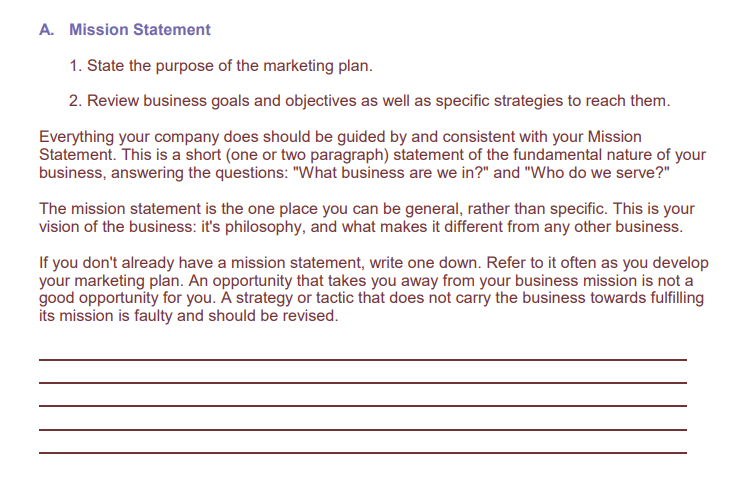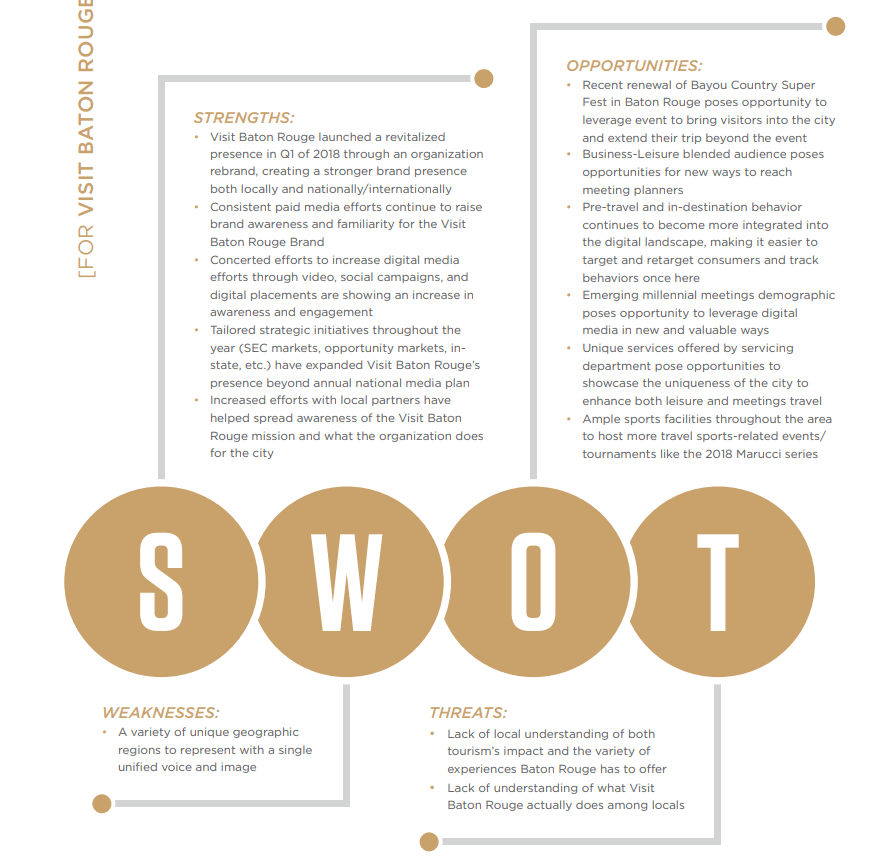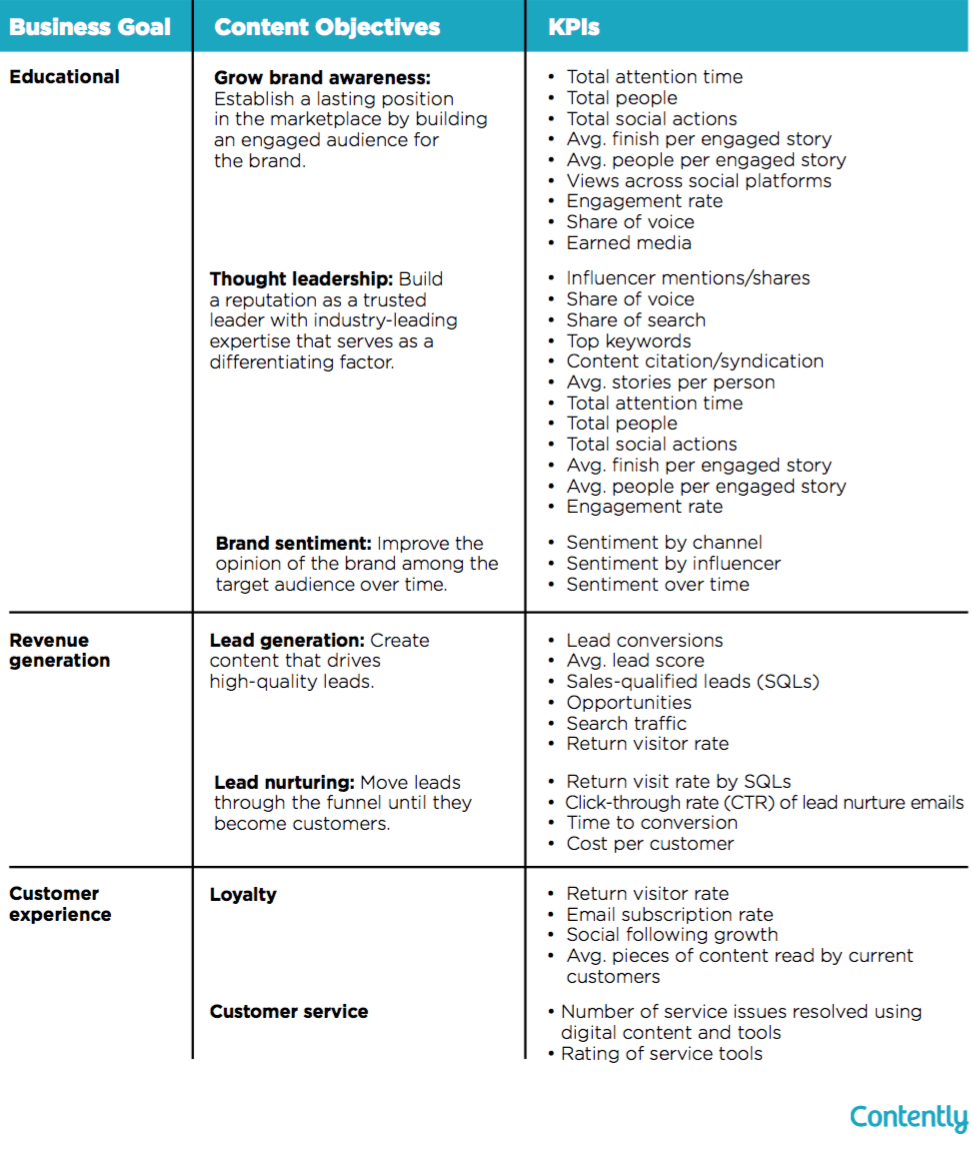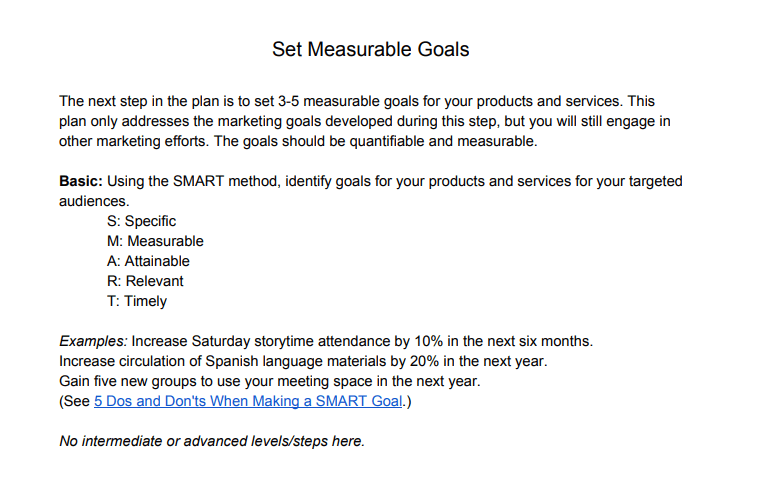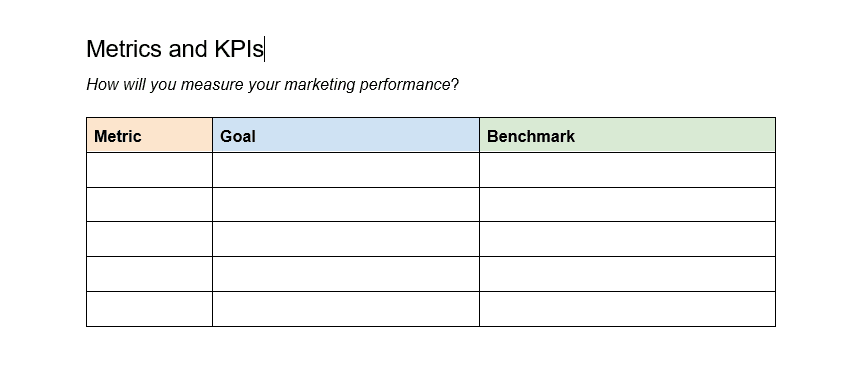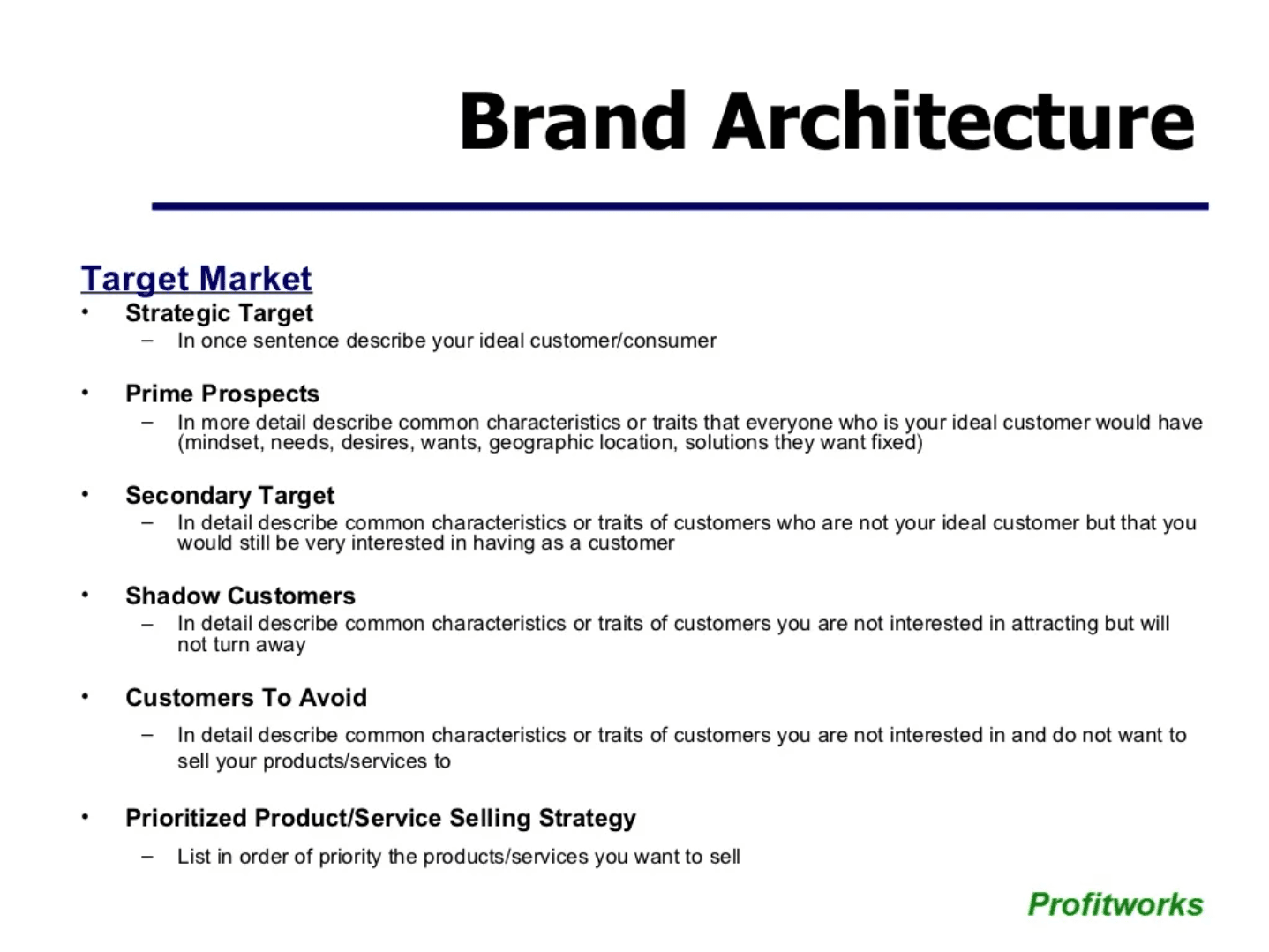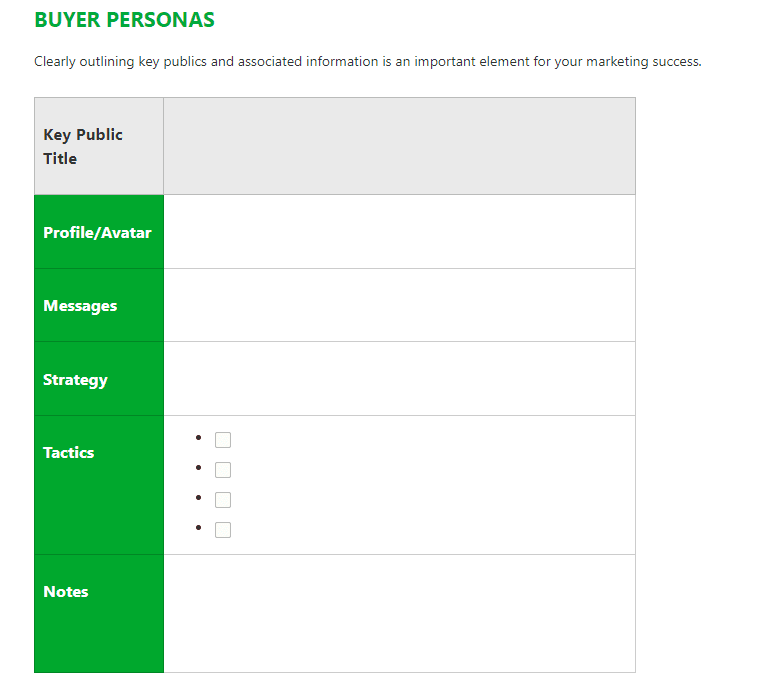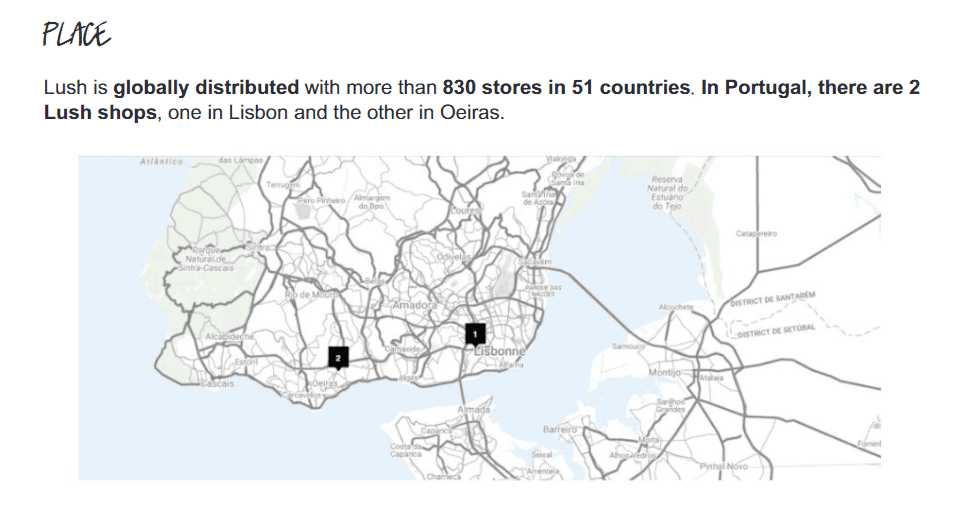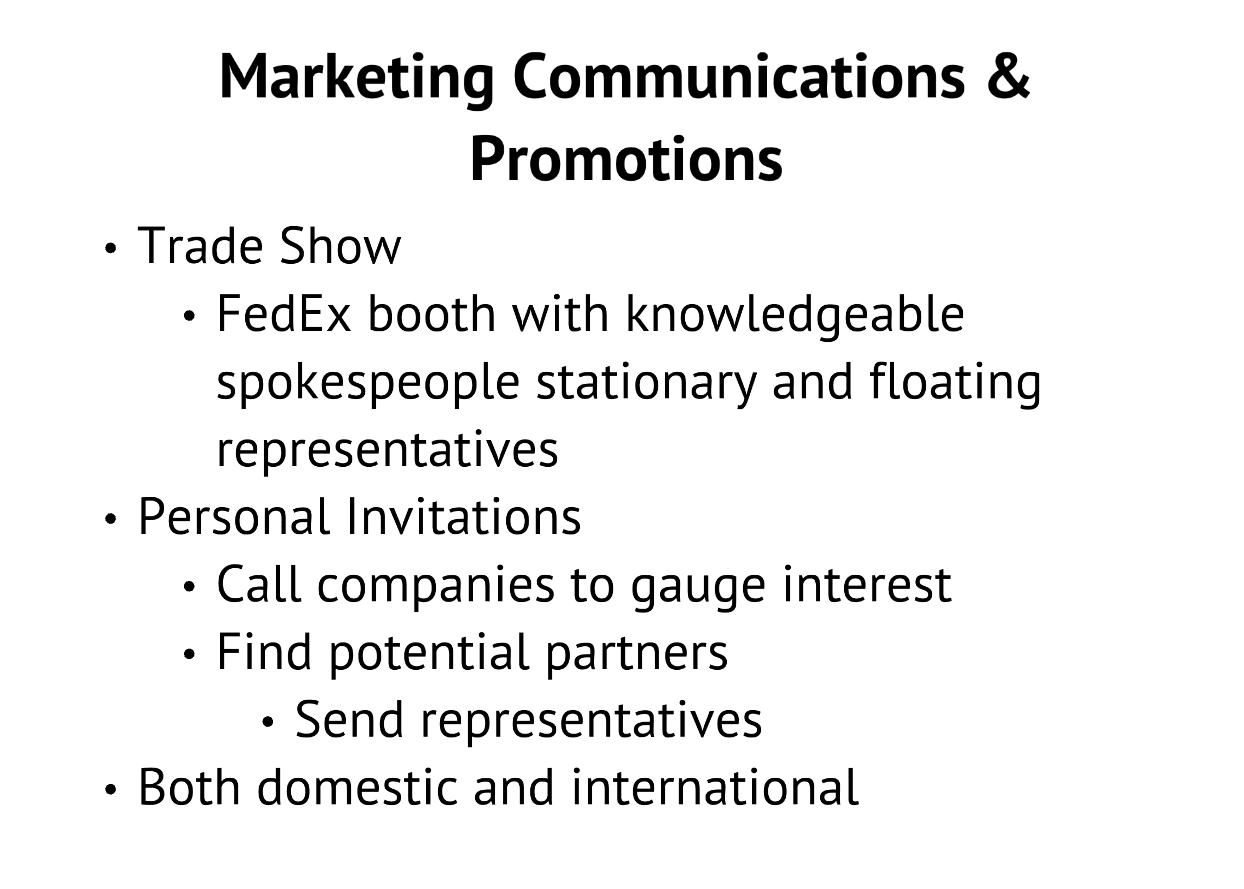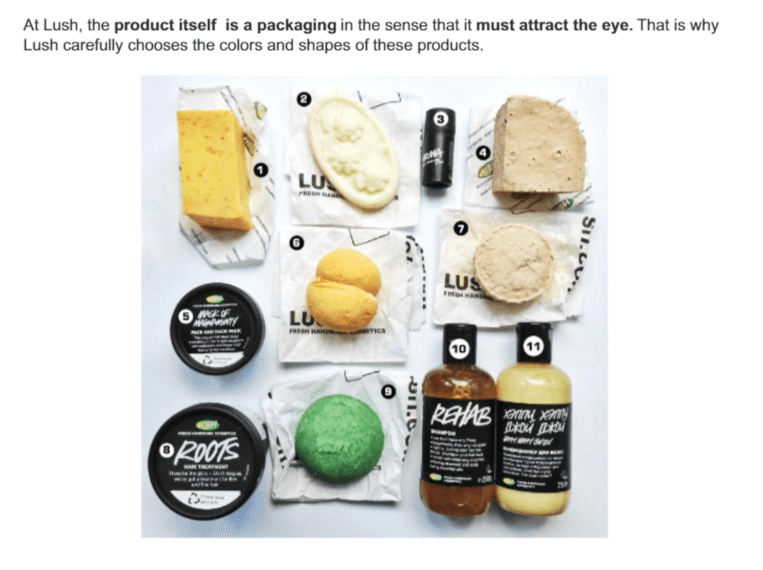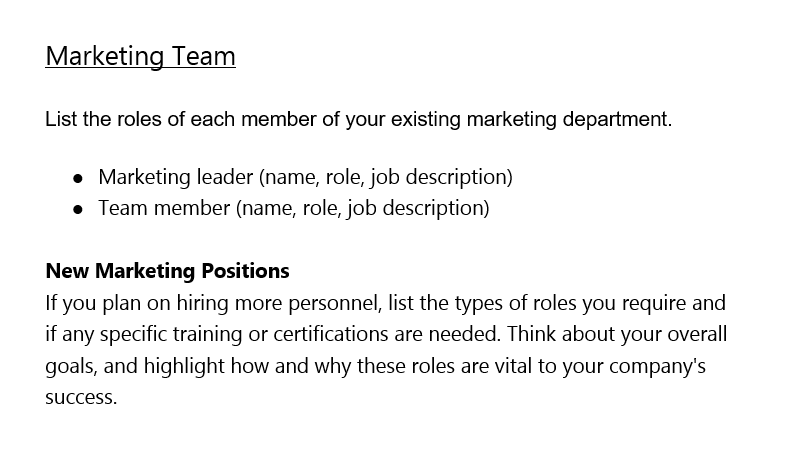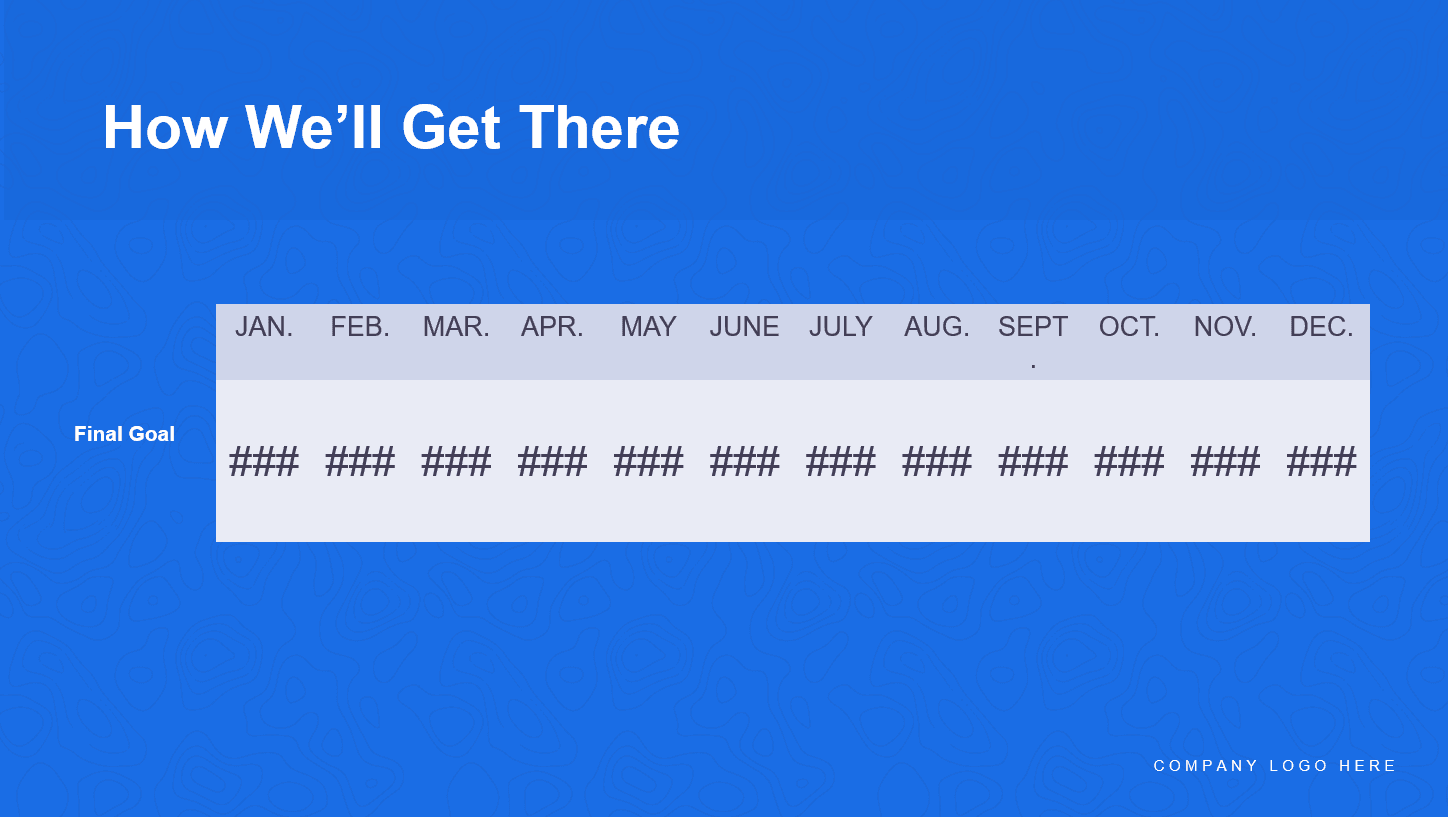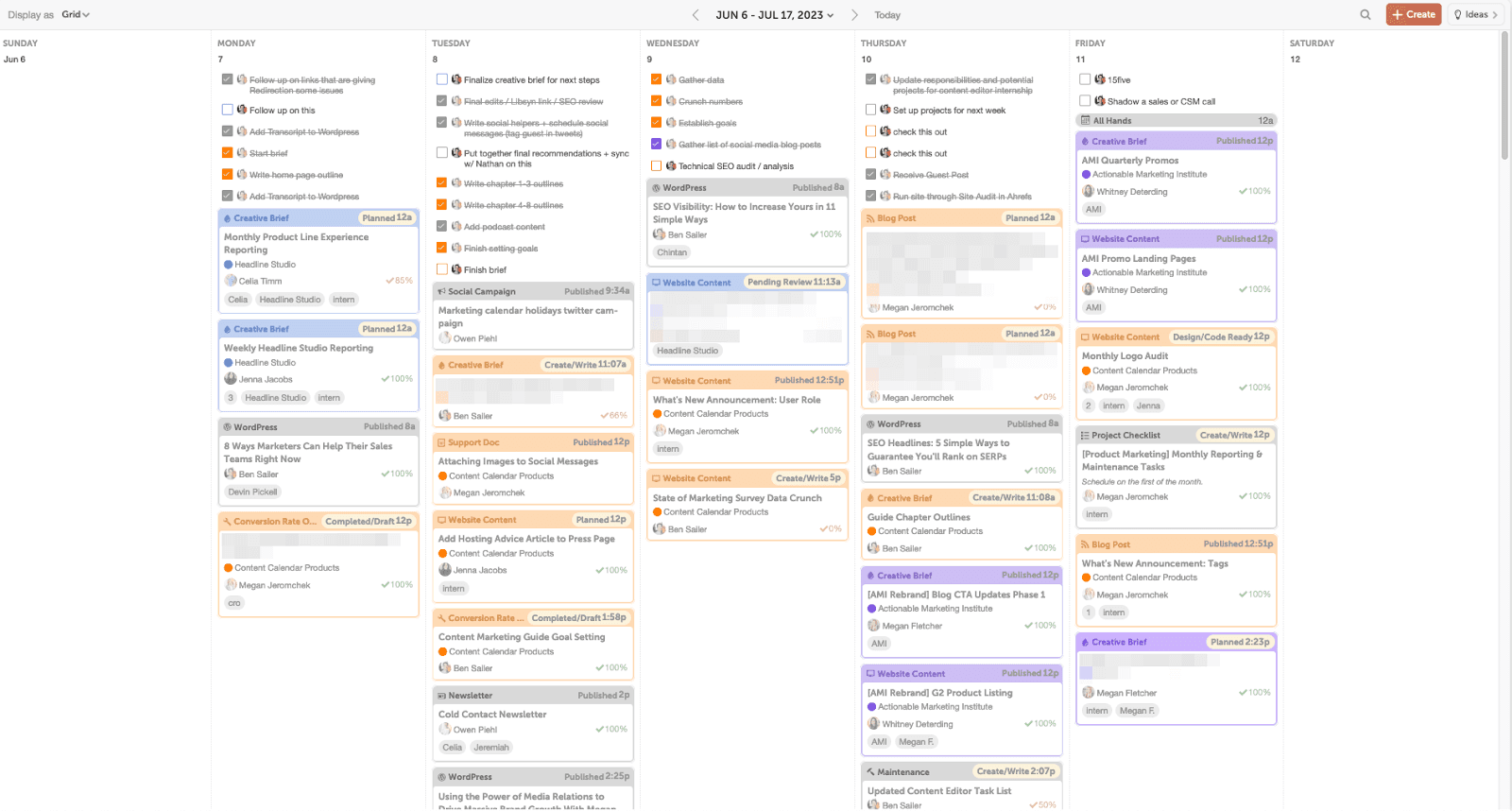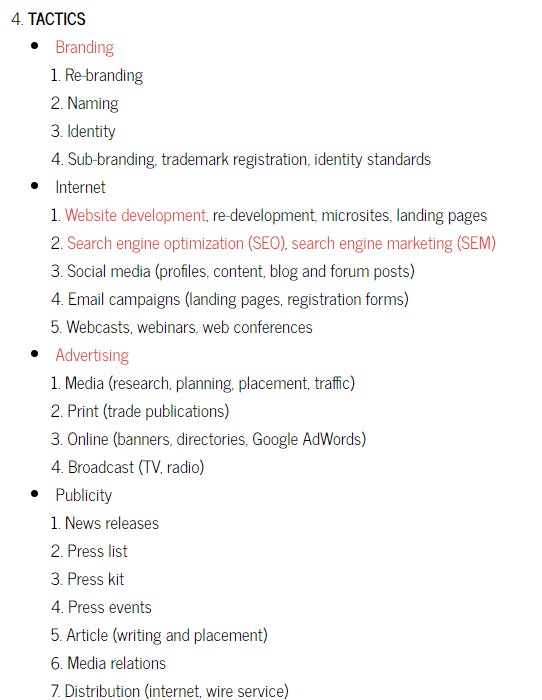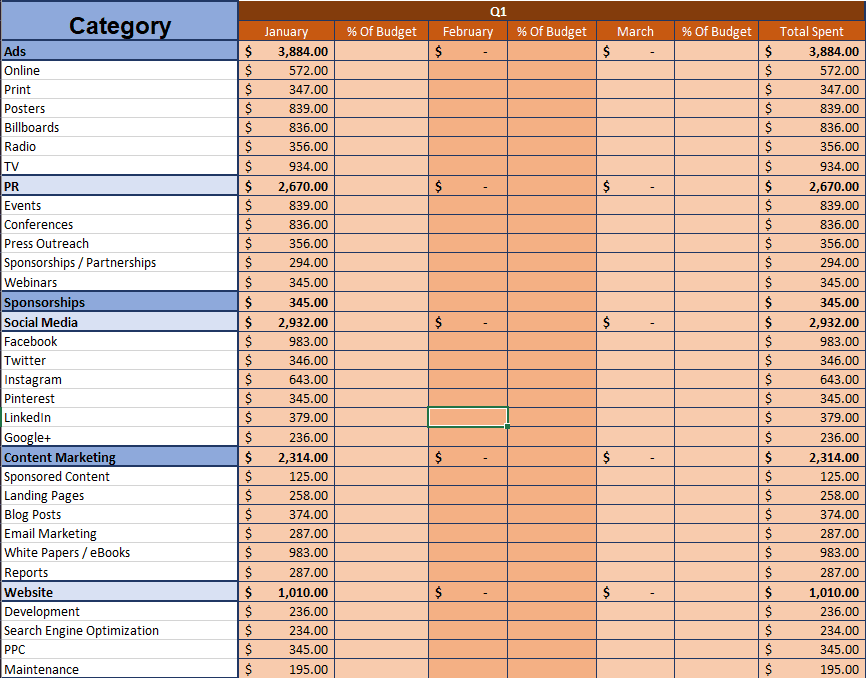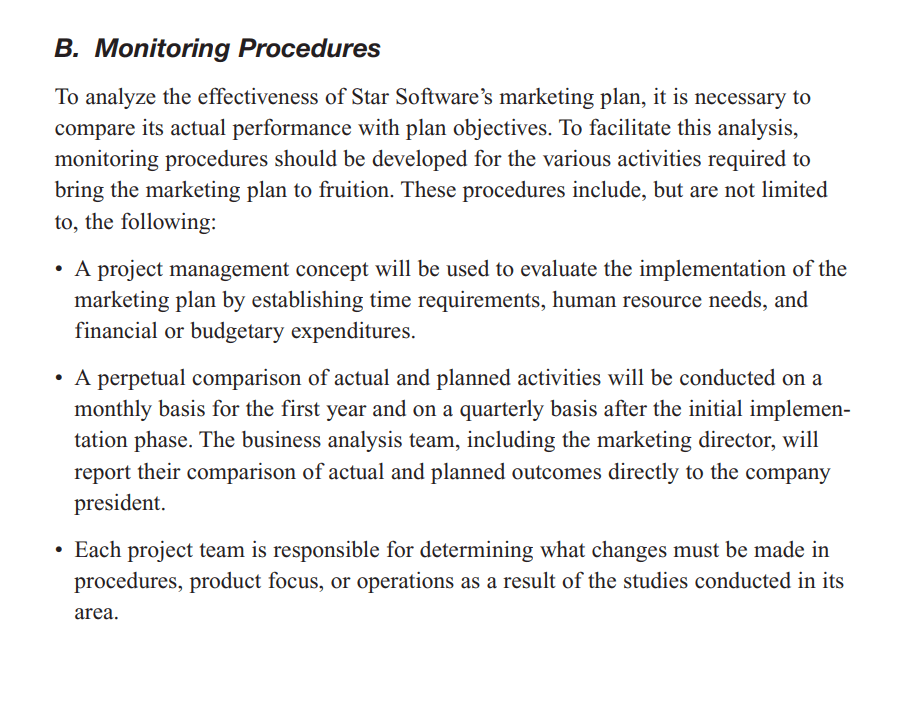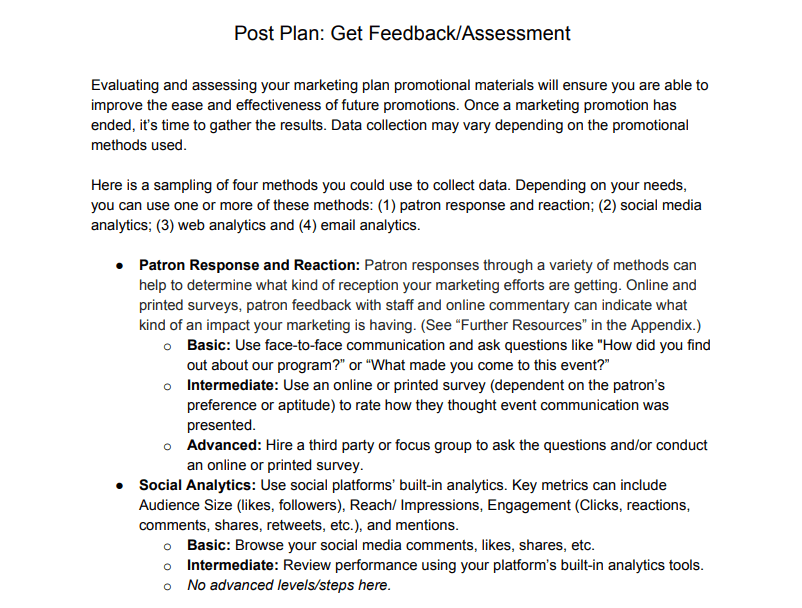If you’re thinking of creating a strategic marketing plan for your team, you probably noticed that there’s no one way to structure one. They all have different elements that suit the businesses that made them.
So, what marketing plan components should you include in yours?
Let’s explore the marketing plan elements you’ll find and look into specific examples. Then, you can choose the components that’ll help you execute your strategy.
No need to write your marketing plan from scratch. Take this template kit and customize it with the sections discussed in this blog post to create an effective document fast.
You can sort marketing plan components into seven different categories:
- Business: These elements explain your business, so you know how to market its strongest elements.
- Marketing outcomes: Sections covering marketing goals and objectives determine the outcomes you want to see from your marketing plan and strategy.
- Market: The market-focused sections of a marketing plan analyze your competition and audience to help you understand your position in the market.
- Product: Product-focused components set up a plan for marketing and selling your products using the marketing mix — product, price, place, promotion, packaging, and positioning.
- Marketing methods: Marketing plan sections related to methods determine the actions you’ll take to perform marketing.
- Action plan: These elements record the who, what, where, when, and how of executing your marketing strategy.
- Accountability: After you hash out your marketing plan, you’ll need to explain how you’ll stick to it. Accountability components set processes in place to monitor your execution and results.
Ready to take your marketing to the next level? Check out this easy guide to create a winning marketing plan!
Now, let’s look at the marketing plan components that fall into each category:
1. Mission Statement
Your mission statement condenses your business’s philosophy into a few sentences. Think of it as the guiding principles that drive your company.
The Massachusetts Small Business Development Center Network’s marketing plan template provides space for a mission statement and explains all its fundamentals.
2. Business Summary
A marketing plan’s business summary breaks down what your business does and why. After you add it to your plan, you can use it as a boilerplate for future opportunities to explain your business.
Disruptive Advertising’s marketing plan sample includes an executive summary that serves a similar purpose. It describes a fictional business and its aspects that will be important to know for marketing.
3. Branding
Branding is the language and imagery associated with your company and product. The branding section of a marketing plan includes logos, images, writing tone, taglines, and other essential branding assets.
Vital’s guide to writing a marketing plan includes a slide on branding that offers tips on establishing a consistent brand to add to your plan.
4. SWOT Analysis
The “SWOT” in “SWOT analysis” stands for “strengths, weaknesses, opportunities, and threats.” A marketing plan’s SWOT analysis records a business’s differentiators and resources it has to take advantage of them.
Visit Baton Rouge’s marketing plan has SWOT analyses for both its Visit Baton Rouge and City of Baton Rouge brands.
5. Marketing Goals
Your marketing plan’s marketing goals are your marketing goals at the highest level. At this point, you don’t need to get into specific objectives or metrics — just the gist of the goal.
This content plan — a specialized marketing plan — from Contently lists goals in the very left column of this chart, followed by objectives and key performance indicators (KPIs).
6. Marketing Objectives & Key Results (OKRs)
Once you set your high-level marketing goals, hone in on the objectives and key results (OKRs) you want to meet under them. Frame your marketing plan OKRs as SMART goals to keep them achievable.
The Wisconsin Public Library Systems Marketing Cohort’s library marketing plan template suggests a similar strategy.
7. Marketing Metrics & Key Performance Indicators (KPIs)
With your marketing goals and objectives established, it’s time to identify the metrics you’ll use to measure their progress. Key performance indicators (KPIs) are the metrics that signify your marketing’s impact on others.
Our marketing strategy template includes a table for metrics and KPIs with goals and benchmarks to keep you on track.
8. Market Analysis
The market analysis section of a marketing plan captures all the market factors influencing your business. It includes details on competitors, regulations, trends, and other market aspects that you’ll watch as you execute your strategy.
This Houghton Mifflin marketing plan has an environmental analysis with a component called “The Marketing Environment” that analyzes factors like competition and social trends.
9. Competitor Analysis
A competitive analysis lists your competitors and pinpoints their strengths and weaknesses. With this knowledge, you can steer your marketing to have advantages over your competition.
The Naperville Park District’s marketing plan has a similar provider analysis that shows how even nonprofits can benefit from this element.
10. Target Audience
A marketing plan’s target audience outlines the ideal customers for your company to market to.
This marketing plan example from Profitworks includes an extensive “Target Market” slide with different categories within a target audience.
11. Buyer Personas
Buyer personas are hypothetical customers that represent members of your target audience. They give you a person to imagine you’re marketing to as you build and execute your strategy.
Evernote’s marketing plan template has tables for buyer personas, including strategies and tactics for each.
12. Product
Product is the first “P” in the marketing mix. This strategic marketing plan element defines the items you’ll sell for a profit.
In our Disney marketing plan, you’ll see that the “Product” section can include items besides singular objects like places and programs.
13. Price
The second marketing mix, “P,” price, establishes your pricing strategy for your product.
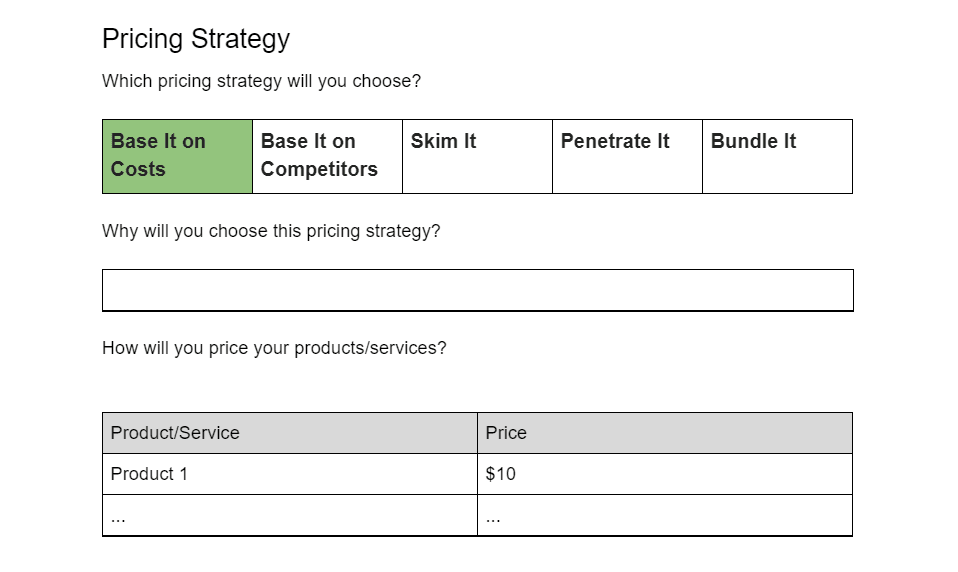
AddThis’s marketing plan template lets you choose your pricing strategy and rationale, then dive into the price for each product and service.
14. Place
Time for the third marketing mix “P” — place. Here, you’ll state the places you plan to make your products or services available.
This Portugal-focused Lush marketing plan features a map showing the locations of the country’s two Lush stores.
15. Promotion
Next up in the marketing mix comes promotion: your tactics for promoting your product.
A student-made marketing plan for FedEx offers ideas for the company to promote its services using trade shows and invitations.
16. Packaging
Some folks stop their marketing mix at promotion, but you can continue with packaging, the fifth “P.” This component establishes a packaging strategy.
The Portuguese Lush marketing plan highlights the company’s unique approach to packaging (or lack of).
17. Positioning & Messaging
Positioning and messaging are the last “P” in the six-P marketing mix. Positioning refers to your strategy for establishing your brand identity according to your audience’s wants, and messaging makes up the messages you’ll use for positioning.
The Naperville Park District lacked positioning while making its marketing plan. So, its “Positioning” section acknowledged this gap and built a strategy for better positioning in the future.
18. Marketing Tactics
In your marketing tactics section, you’ll choose the actions you’ll take to execute your marketing goals. Consider them the steps you’ll need to take to make it from your current performance to your desired performance.
Serena’s marketing plan template organizes marketing tactics by the specific objective to keep the user focused on their goals.
19. Marketing Channels
Marketing channels are the means you’ll use to market to your audience. In this part of your marketing plan, you’ll decide which marketing channels you’ll use to execute your marketing strategy.
In its marketing plan, the University of Illinois lists its intended marketing channels with accompanying objectives, tactics, and metrics.
20. Marketing Media & Content
You can take two approaches to a marketing media and content element of a marketing plan. Choose between sharing commonly used assets for your marketing or showing examples of successful media and content from the past.
The University of Illinois includes examples of the media and content used on its marketing channels after giving an overview of each channel.
21. Roles & Responsibilities
After establishing what you plan to do to execute your marketing strategy, consider listing who will do what tasks. The roles and responsibilities element of a marketing plan will establish everyone’s role on your marketing team and how they’ll contribute to your strategy.
Business.com’s marketing plan template (direct document download) features a “Marketing Team” section for you to designate each role and think of any new roles you’ll need.
22. Marketing Timelines
Breaking up your goals and tactics into a timeline will give you a macro game plan for bringing your marketing strategy to life. A marketing plan’s timelines offer a roadmap for meeting your goals.
Our marketing strategy template bundle’s PowerPoint file has a table for you to set KPIs per month to help you reach your final OKR.
23. Content Schedule
While marketing timelines operate on a macro scale, your plan’s content schedule acts on a micro-scale. It scopes down to the timetable your content team needs to follow to help you reach your goals.
A supplemental annual content calendar will give you the most detail to work with. CoSchedule’s marketing calendar speeds up the calendar creation process.
24. Marketing Plan Checklist
Not sure what tactics from your marketing plan to start with? Make a marketing plan checklist that prioritizes the actions that should happen first.
Modern Marketing Partners has a marketing planning checklist with high-level tasks to complete as part of a marketing plan.
25. Marketing Budget
Your marketing budget is the amount of money you plan to dedicate specifically to marketing. Calculate this section based on the resources you’ll need to execute your plan so you know its feasibility.
Our marketing budget spreadsheet includes the most common marketing expenses to reduce guesswork.
26. Monitoring & Controls
Watching your marketing plan’s progress as you execute it will help you keep your plan on track. A monitoring and controls section sets up methods to perform that supervision.
Houghton Mifflin’s marketing plan features monitoring instructions at the very end of the document.
27. Reviews & Revisions
A marketing plan’s reviews and revisions component records the reviews and revisions you perform on your plan or materials related to the plan. You can document the reviews and revisions you’ve made or outline a review process here.
The Wisconsin Public Library Systems Marketing Cohort takes the latter approach in its marketing plan.
28. Tracking Guidelines
A marketing plan’s tracking guidelines dictate what success metrics you’ll track, what you’ll use to track them, and how often you’ll track them. Add your current metric baselines to compare with future metrics.
Visit Baton Rouge has a high-level list of tracking guidelines in its marketing plan’s “Evaluation” section.
29. Reporting Guidelines
After you define how you’ll measure your success, you’ll need to determine what you’ll do to report those measurements. Your marketing plan’s reporting guidelines will outline how often you’ll report and what metrics you’ll report on.
NerdyMind’s sample internet marketing plan uses a few bullet points to set up a reporting plan.
30. Contingency Plan
The conditions we assume we’ll have as we execute our marketing plans don’t always match reality. Your marketing plan’s contingency plan establishes what you’ll do in alternative situations.
This marketing plan from the University of Baltimore sets up contingency plans in case of increased advertising on the market.
Make sure your marketing plan is TILA-compliant—use the TILA Compliance Generator to cover all the essentials!

